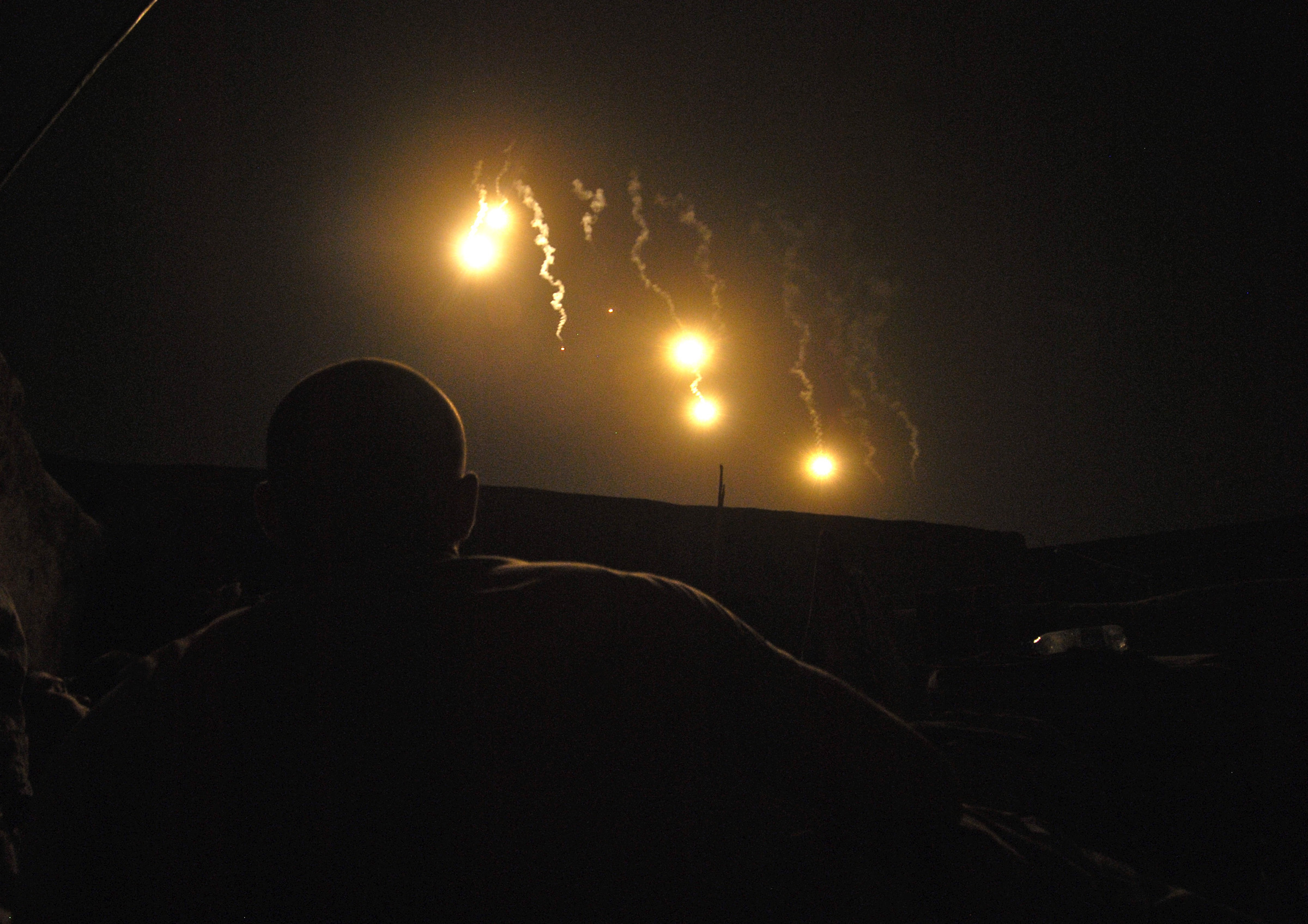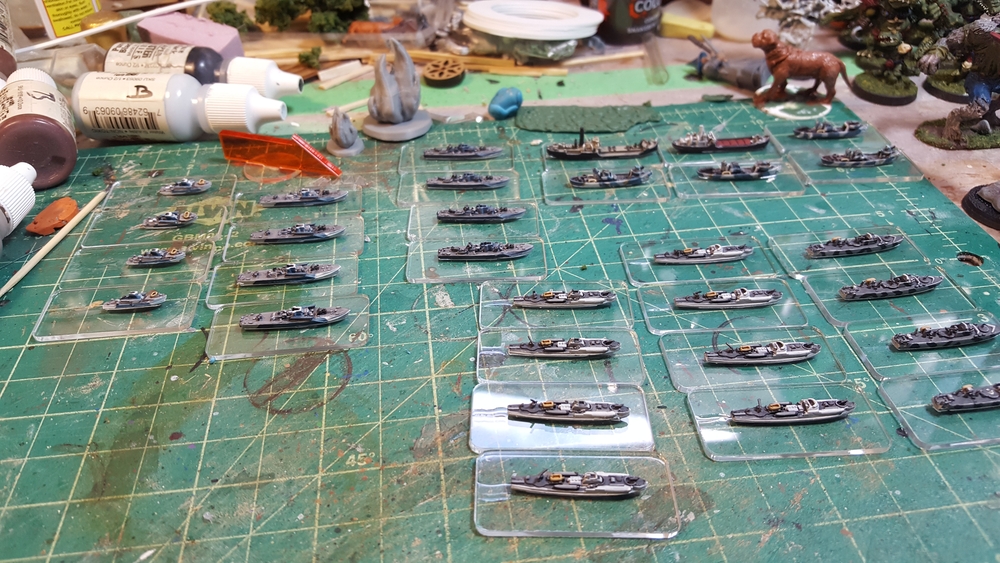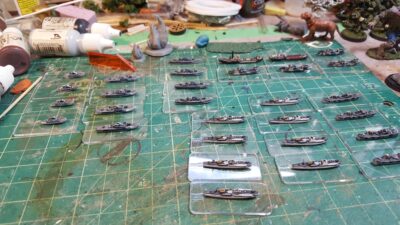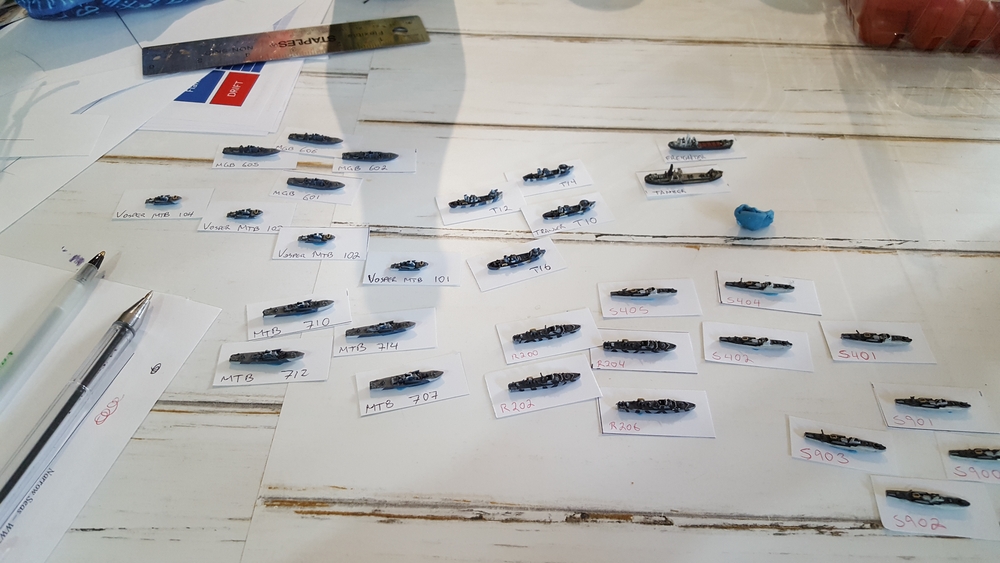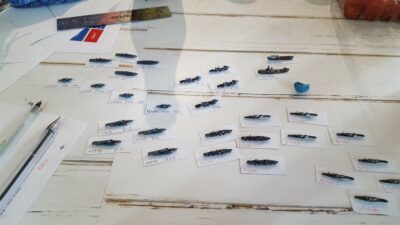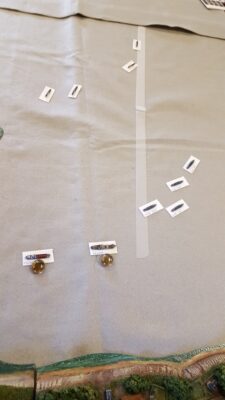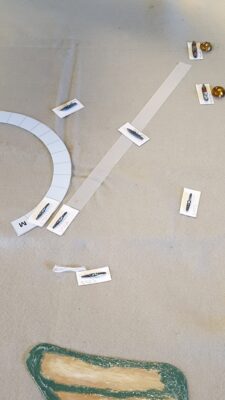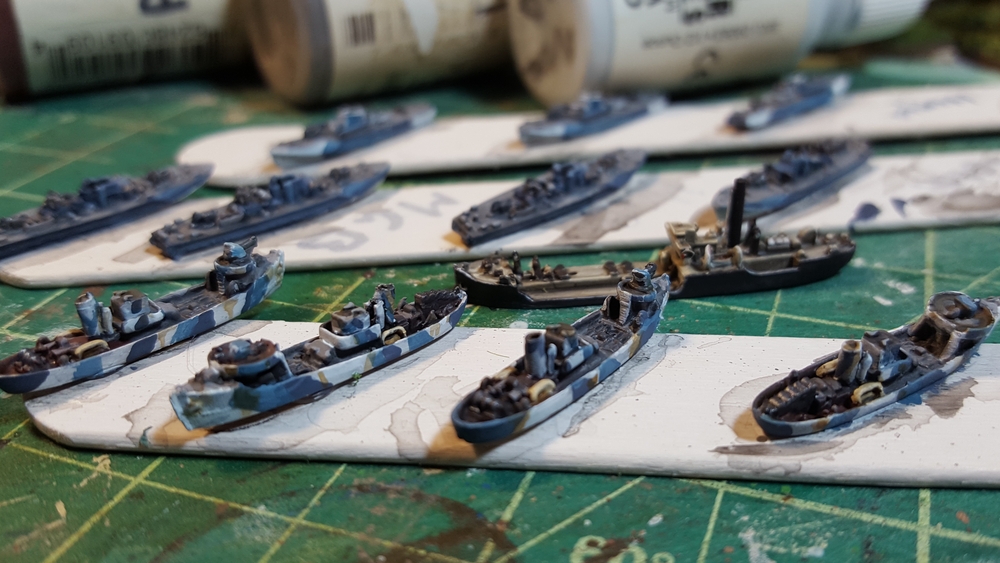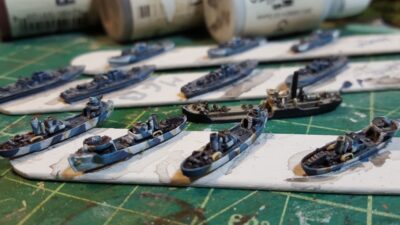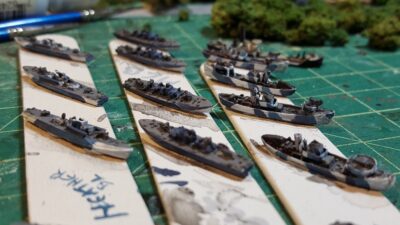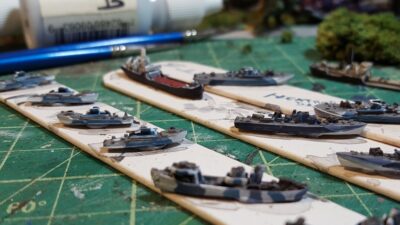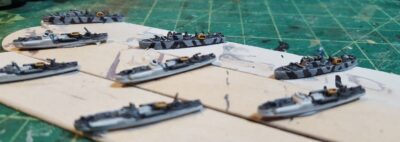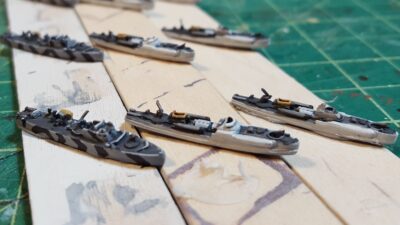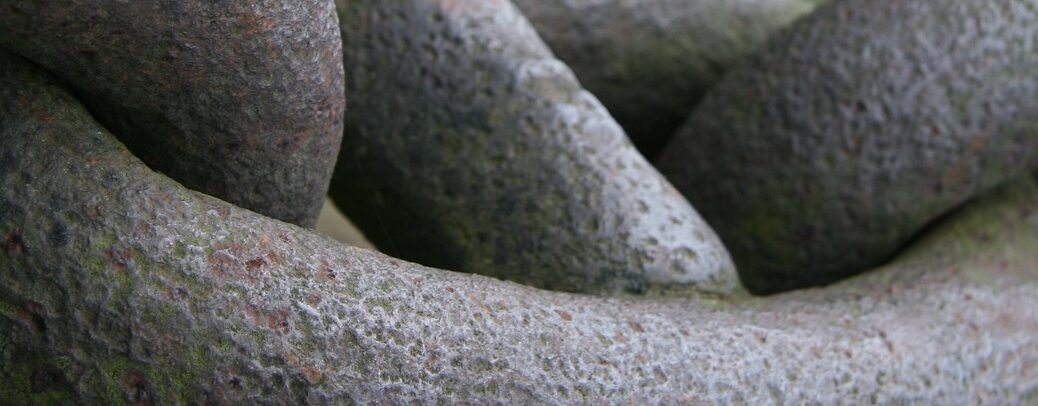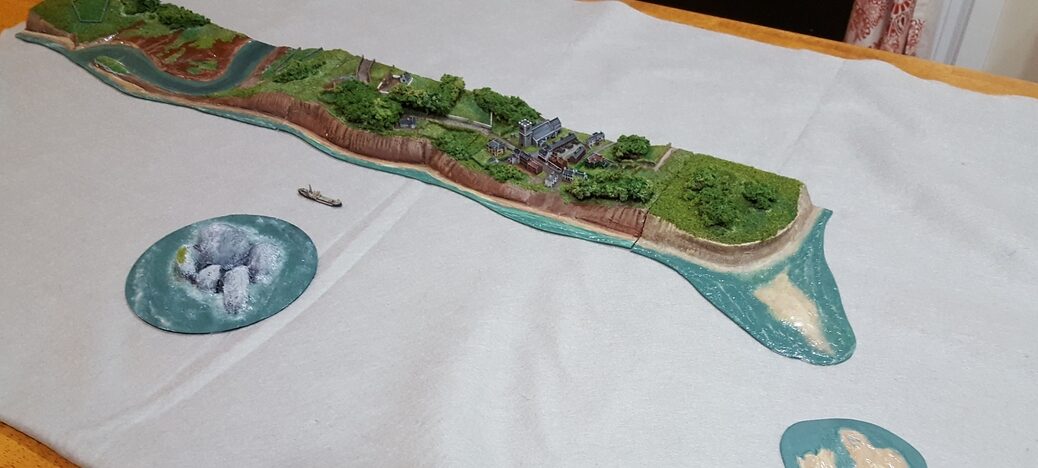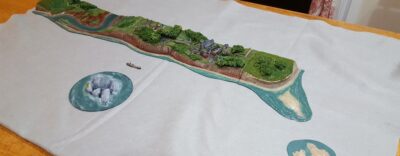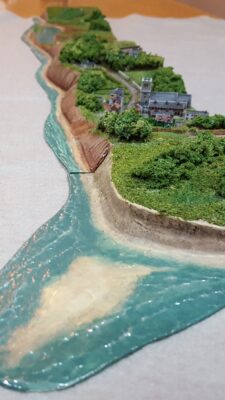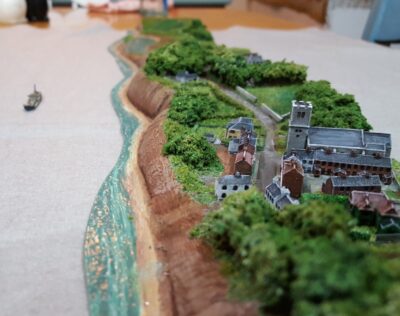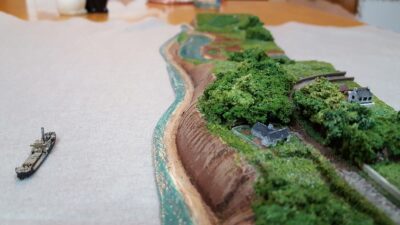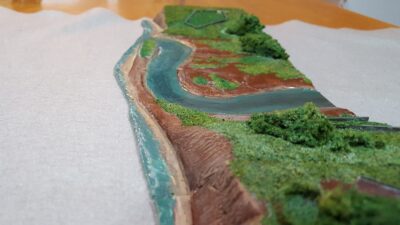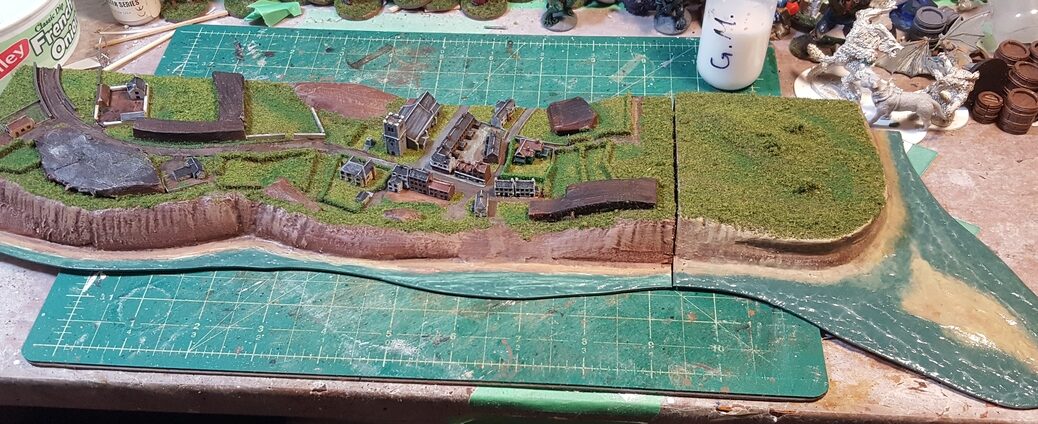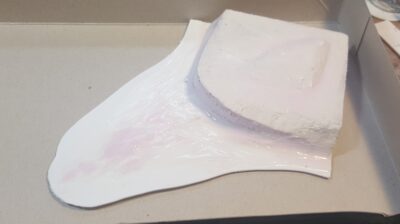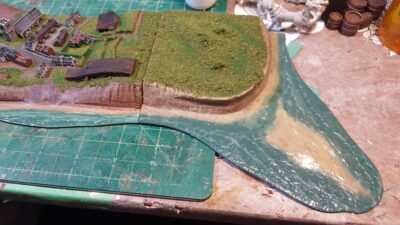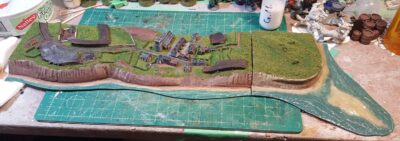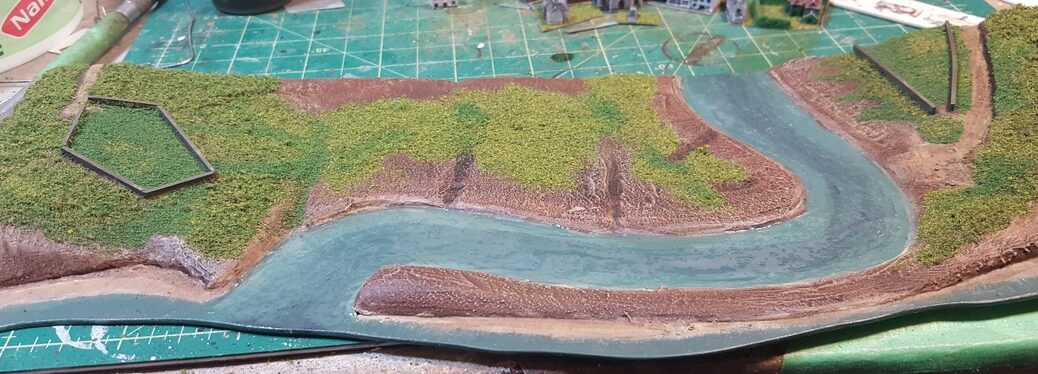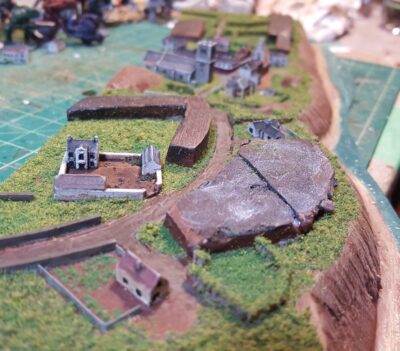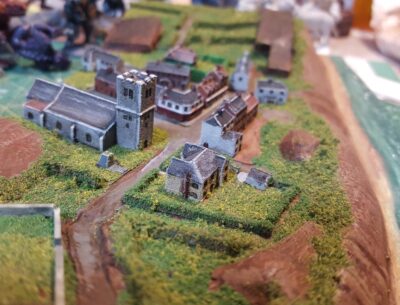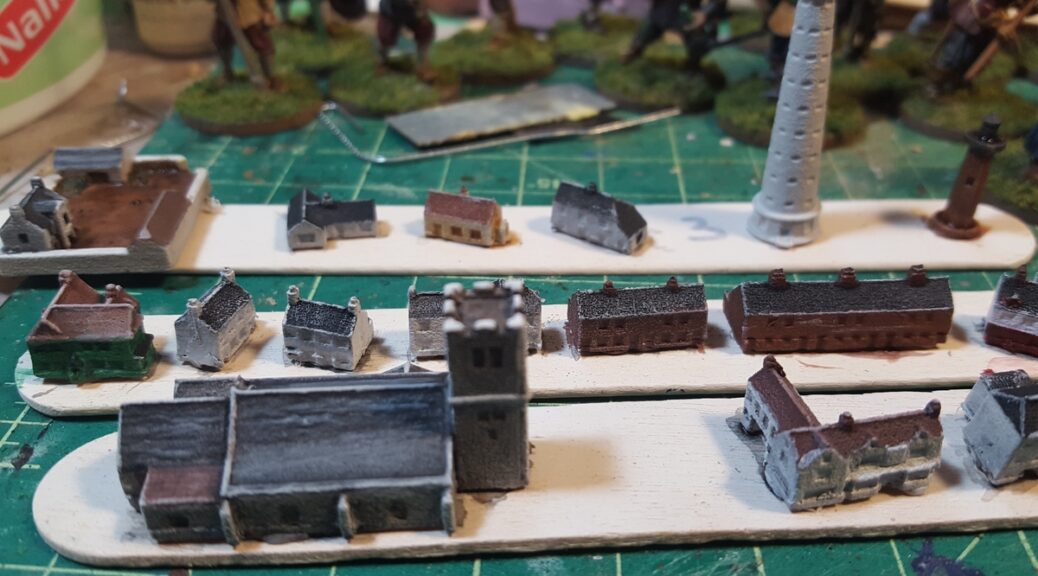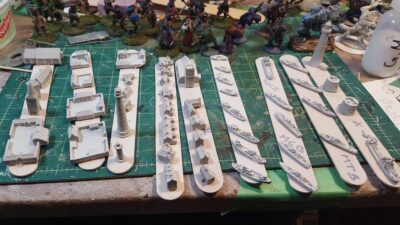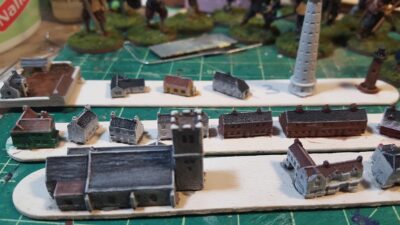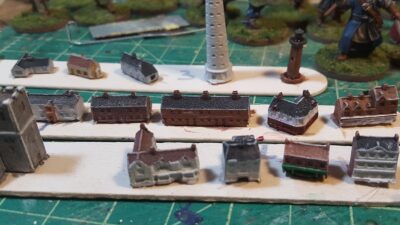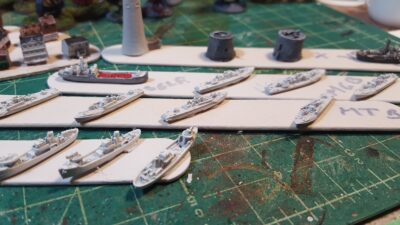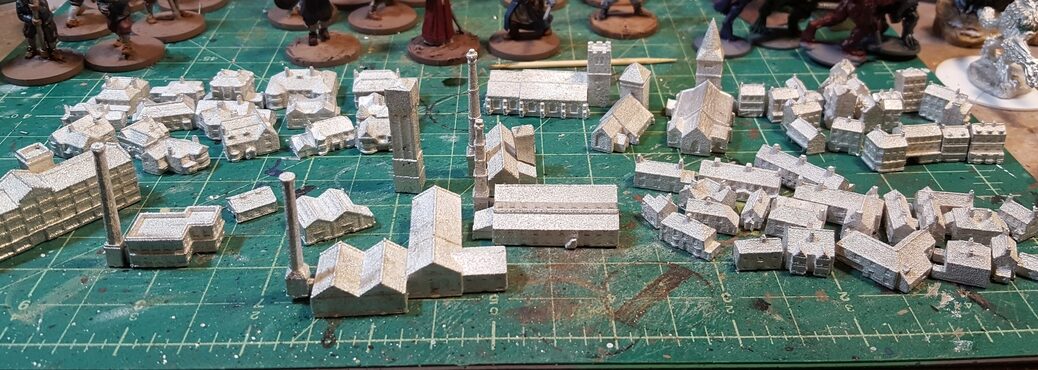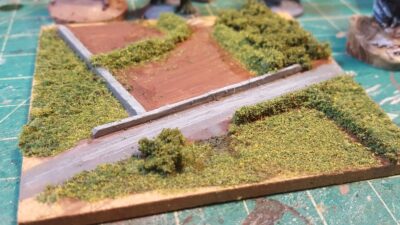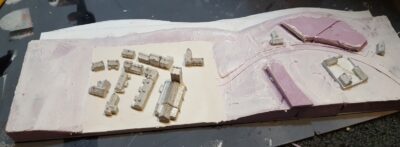Both Narrow Seas and Coastal Patrol (and probably other naval games, I’m guessing) include rules for the moon being full or partial in their sighting and visibility rules, and a difference if your target is silhouetted against the moon or “down-moon”. They’ve also got rules for star shells and flares, with a different diameter in each game – 12″ diameter in Coastal Patrol, 8″ in Narrow Seas.
Accordingly I decided to crank out full moon, partial moon, and star shell illuminated area markers suitable for both games.

The star shell markers are quarter-circles; you could print four and tape them together, I guess, or just do what I intend to, use the quarter circle as a quick flexible marker for the extent of the illuminated area around a marker denoting the centre of it.
The moon graphic was originally from OpenClipArt.org, still a useful site but much, much messier than it used to be. I suspect the moon in that image was pulled in from elsewhere on OpenClipArt, but searching that site has become harder and harder. I cut mine out separately with a circle cutter then glued them back to back for ease of use.
Star Shell Markers
I’ve done four simple 3d starshell/flare markers for use on the tabletop to mark the centre of an illuminated area and the actual star shell location, each a length of wire on a 25mm MDF base with tufts of cotton wool for the characteristic smoke/light effect you see in photos of starshells. They’re a bit rough but they work, I think.
The bases are 2mm thick MDF and 25mm wide; I used the same water effects with gloss gel that I use on terrain for this naval projects then did some basic highlighting with white paint to kind of give the effect of light glaring off the water.
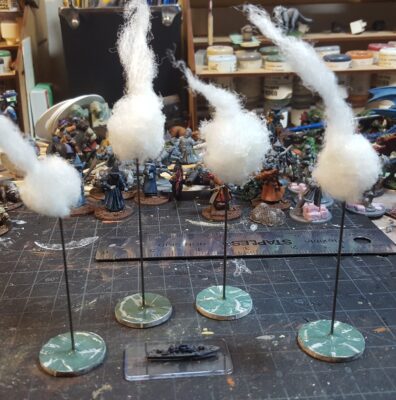
I worked a bit of white glue into the cotton wool so the whole thing was more wargamer-proof and the plumes stand up better.
We’ve only done two games since actually introducing the illumination rules to Coastal Patrol, and it’s fascinating to watch how the illuminated areas are treated like “terrain” to be avoided while maneuvering around the table. They definitely add tactical complexity to the small unit naval game!

